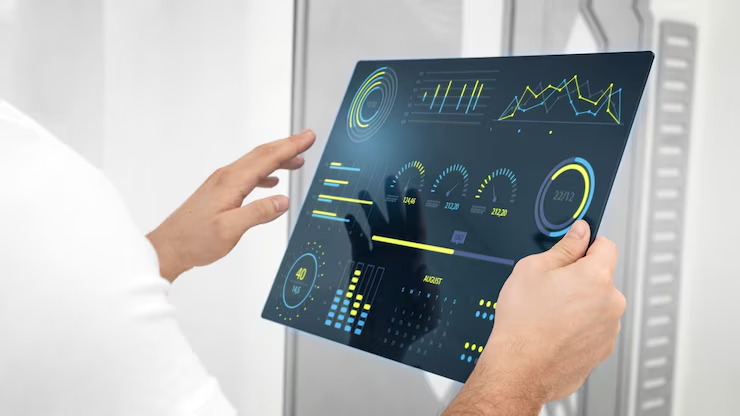Optimize Energy Use with IoT-based Load Forecasting and Demand Response
Leverage real-time data to manage energy demand, improve grid stability, and maximize efficiency with Smart Utility IoT’s advanced solutions.
Smart Utility IoT offers state-of-the-art IoT-based Load Forecasting and Demand Response Platforms designed to optimize energy management for utility providers. Our platform uses real-time data to predict energy consumption patterns, adjust demand in real-time, and prevent grid overloads. By integrating IoT devices with cloud computing, we provide actionable insights that help utilities reduce operational costs, improve grid stability, and enhance customer service. Headquartered in New York, NY, Smart Utility IoT is committed to delivering innovative, reliable, and scalable solutions tailored to the energy sector, helping utility companies unlock the full potential of IoT technology through continuous product development and expert support.

Core Components
In addition to offering products and systems developed by ourselves and our partners for Load Forecasting and Demand Response Platforms, we are also proud to feature top-quality offerings from our trusted collaborators, GAO Tek Inc. and GAO RFID Inc., providing reliable, high-performance technologies, integration, and services you can depend on. Where appropriate, we have included links to relevant products and systems from GAO Tek Inc. and GAO RFID Inc.
Hardware
- IoT-enabled smart meters
- Energy sensors for real-time data collection
- Communication nodes and controllers
- Edge computing devices for localized processing
Software
- Data analytics and load forecasting software
- Demand response algorithms and scheduling tools
- Real-time monitoring dashboard
- Predictive maintenance and anomaly detection
Cloud Services
- Scalable cloud infrastructure for data storage and processing
- Machine learning models for demand prediction and energy optimization
- Secure APIs for third-party integrations
- Over-the-air (OTA) software updates
Key Features and Functionalities
- Real-time load forecasting based on historical and live data
- Automated demand response to balance energy load
- Dynamic pricing and tariff optimization for customers
- Peak load shaving to avoid grid stress
- Seamless integration with grid management systems
- Advanced reporting and visualization of energy consumption
- Predictive maintenance alerts to prevent equipment failures
Integrations and Compatibility
- Integration with utility management and SCADA systems
- Compatible with smart grid infrastructures
- Interfaces with building management systems (BMS)
- Data sharing with renewable energy systems (e.g., solar, wind)
- Interoperable with third-party software and analytics tools
- Supports communication protocols like LoRaWAN, Zigbee, and LTE
Applications
- Utility Providers: Enhance grid stability and reduce operating costs through predictive load forecasting and demand response.
- Smart Cities: Optimize city-wide energy management for public lighting, transportation systems, and buildings.
- Renewable Energy Integration: Balance energy loads from variable renewable energy sources (e.g., solar, wind) with demand.
- Commercial and Industrial: Manage energy usage and costs for large facilities, reducing peak energy consumption.
- Residential Areas: Offer dynamic pricing and energy-saving options to homeowners.
Benefits
- Improved Energy Efficiency: Reduce energy consumption during peak hours by optimizing demand response.
- Cost Reduction: Minimize operational costs with predictive analytics and automation.
- Grid Stability: Maintain grid stability by balancing load and preventing overuse during high demand.
- Increased Customer Satisfaction: Offer dynamic pricing and improved service reliability for end customers.
- Sustainability: Help utilities reduce carbon footprints with efficient load management.
- Scalable Solutions: Easily scale the platform to accommodate growing energy demands and new assets.
Industries We Serve
- Electric Utilities
- Smart Cities
- Commercial & Industrial Sectors
- Renewable Energy Providers
- Residential Energy Management
Relevant U.S. & Canadian Industry Standards
- FERC Order 745: Demand Response Mechanisms
- ISO 50001: Energy Management Systems
- NERC Reliability Standards
- CSA C22.2: Electrical Safety Requirements
- U.S. EPA Greenhouse Gas Standards
- CAN/CSA C22.2 No. 61010: Safety for Electrical Equipment
Case Studies
San Diego, CA – Smart Grid Load Forecasting
Smart Utility IoT implemented a load forecasting platform for San Diego Gas & Electric, enabling better demand-side management and reducing peak load by 18%. The system integrated real-time data from over 200,000 smart meters, optimizing grid usage and minimizing operational costs.
New York City, NY – Demand Response for Peak Shaving
In New York City, Smart Utility IoT deployed a demand response platform to reduce energy consumption during peak hours across commercial buildings. The platform automatically adjusted thermostats and lighting, saving over 12% on energy costs during summer peaks while preventing grid overloads.
Toronto, ON – Automated Demand Response for Industrial Parks
A partnership with Toronto Hydro enabled industrial parks to participate in automated demand response, reducing their energy consumption during peak periods. This resulted in a 15% energy savings and a more stable grid operation, with real-time adjustments to factory energy usage.
Trusted IoT Partner with Global Recognition
Smart Utility IoT is designated as an “IoT Expert” and a “Premier Partner” by GAO (Global Advanced Operations) Tek Inc., a top 10 global B2B technology supplier, and by GAO (Global Advanced Operations) RFID Inc., a top 10 global BLE & RFID company.
Smart Utility IoT proudly sponsors TekSummit, presented in collaboration with our partners. Visit: GAO Tek TekSummit | GAO RFID TekSummit for details.
Contact Us
Interested in optimizing your energy usage and improving grid stability with IoT technology? Contact Smart Utility IoT today for more information, inquiries, or support. Our experts are ready to help you unlock the full potential of IoT-based load forecasting and demand response platforms.
